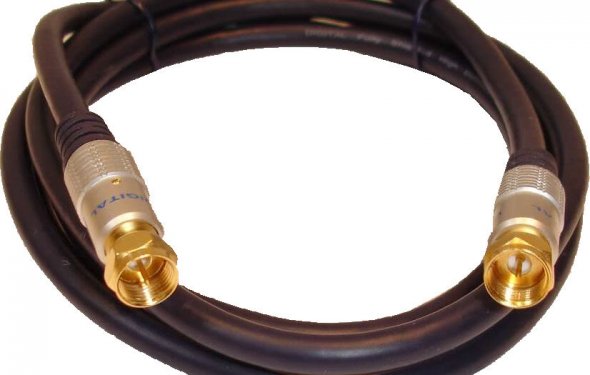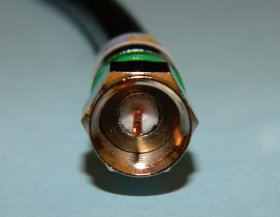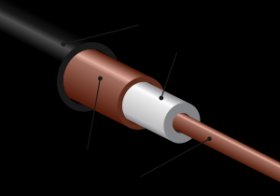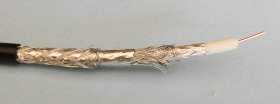Satellite cable types

 Are you using the best cable for the job? You may have heard terms like RG59, RG6, RG11, and Slim RG59 but you didn't know what they meant. There is actually a real difference between these categories of cables and in this series, we'll explain everything there is about choosing a cable.
Are you using the best cable for the job? You may have heard terms like RG59, RG6, RG11, and Slim RG59 but you didn't know what they meant. There is actually a real difference between these categories of cables and in this series, we'll explain everything there is about choosing a cable.
What is a coaxial cable?
Everyone knows what a coaxial cable is, right? It's that fat wire that goes into your cable box, satellite receiver, or into your TV from an antenna. It looks different from an audio cable or headphone cable largely because of its heft.
There's a little more to a coaxial cable than that. A coaxial cable carries its voltage on the inside "core" wire, and is surrounded by layers of shielding that stop any signal leakage. The first layer, the dielectric, provides distance between the core and the outer layers, as well as some insulation. The next layers, collectively called the shield, keep electrical impulses and radio transmissions out and keep any stray impulses in. Finally, a jacket made of flexible plastic or rubber protects the entire cable. Keeping the entire cable the same size, and keeping out stray signals, are important.
Keeping the entire cable the same size, and keeping out stray signals, are important.
Another important characteristic is that in a coaxial cable, unlike a headphone or audio cable, the core is used as part of the connector. So, it makes a direct connection. This helps keep the signal as strong as possible.
Coaxial cable is perfect for broadcast television and satellite signals, which carry a huge amount of information and are very sensitive to outside interference. A satellite signal cable must carry signals from 2MHz to 3, 000MHz. Compare that with an audio cable which just needs to carry signals up to 2 MHz. That's a massive amount of information.
 Generally, coax cables will be referred to by a code such as RG6/U. RG is a very old specification that some people believe refers to the "Radio Guide, " a military guidebook. It also could be a military specification from World War II for cable designated for radio and telegraph use. Any cable marked "/U" is designed for universal use, as opposed to those cables specifically used for computer data or other specified uses. If your cable is not marked "/U" that's ok as well.
Generally, coax cables will be referred to by a code such as RG6/U. RG is a very old specification that some people believe refers to the "Radio Guide, " a military guidebook. It also could be a military specification from World War II for cable designated for radio and telegraph use. Any cable marked "/U" is designed for universal use, as opposed to those cables specifically used for computer data or other specified uses. If your cable is not marked "/U" that's ok as well.
RG11 Cable
Let's start with a quick word about RG11 cable. You're not likely to run into RG11 cable unless you're digging around in the yard. It's designed for long runs and not for in-home use. It looks like all other coax but it's about twice as thick.

|
Aurum Cables High Quality 3 Pack F-Type 90 Degree Angled Male to Female Adapter Speakers (Aurum Cables)
|